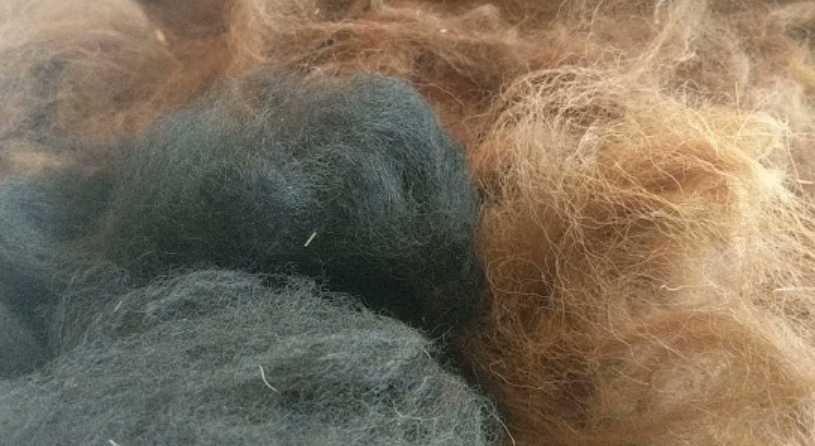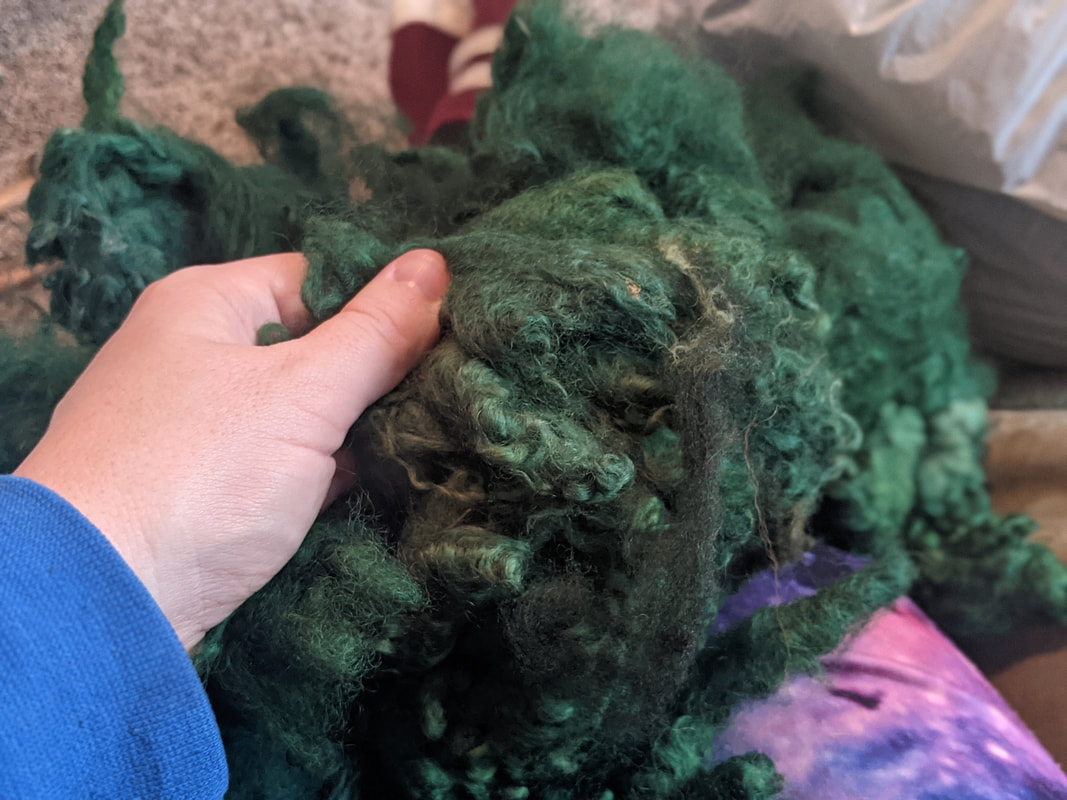|
I don't know about you, but it took me awhile to be able to distinguish between different types of fibers. "Fibers," at least to me, means anything I can prepare into a textile. That can include flax, nettles, milkweed, cotton, wool, or even hair, if you're persistent enough. Wool combs, as the name implies, are often used with wool or hair, as are carding combs. Other fibers like flax, nettles, or milkweed, might require a flax hackle to catch the narrower fibers. Fortunately, we have both in the Etsy store. This wool, pictured above, came from a sheep. A dedicated fiber enthusiast would be able to tell you what kind of sheep, which influences the staple length, or how long each of the individual fibers are. I'm proud of myself knowing this came from a sheep. It wasn't an Icelandic sheep, because those have the creepy eyes. In any case, this wool feels slightly oily because of the lanolin. Some people prep their fiber by washing it. Others--namely the Vikings, who often nalbinded straight from raw wool--didn't wash or prepare the fibers aside from cutting it from the animal. This wool is undyed. So, this is what the fiber looks like straight from the sheep. Watch out! Wool, when washed, can felt, which can be helpful if you're trying to felt, but really inconvenient if you're trying to prepare the wool for spinning. This fiber came from an alpaca, or two alpacas, to be precise. The fibers are long and incredibly soft. They have a very long staple length. These are also undyed. Alpaca fiber is very light and fluffy, and practically spins itself. (Joseph is the one who does the spinning, so that's easy for me to say.) It took most of my self-restraint to keep from saying that this fiber is undyed. Yes, this fiber is dyed. It's also sheep wool, and you can see that it's a bit curlier than the beige/white variety. In order to dye wool, you'll need a dye (either synthetic or natural) and a mordant, or a "biter" that keeps the dye from slipping off of the fibers. This wool was dyed a lovely emerald green.
All of these fibers came to us from our friend Julie at Idaho Family Farm (Dirtpatcheaven). Thanks, Julie!
0 Comments
Leave a Reply. |
AuthorJoseph & Aubrey Bjork Archives
June 2023
Categories
All
|



